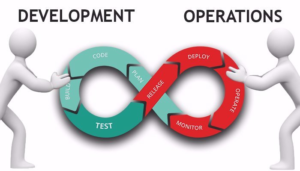Preprocessing your data is like laying down the foundation for a house. Just as a strong foundation ensures the durability and safety of a home, effective preprocessing ensures the success of artificial intelligence (AI) projects. This crucial step involves cleaning and organizing your data and preparing it for your machine-learning models.
Without it, you’ll likely encounter issues derailing your entire project. By dedicating time to preprocessing, you set yourself up for success and ensure your models are accurate, efficient and insightful.
What Is Data Preprocessing?
“Data preprocessing prepares your data before feeding it into your machine-learning models.”
Think of it as prepping ingredients before cooking. This step involves cleaning your data, handling missing values, normalizing or scaling your data and encoding categorical variables into a format your algorithm can understand.
The process is fundamental to the machine learning pipeline. It enhances the quality of your data to improve your model’s ability to learn from it. By preprocessing your data, you significantly increase the accuracy of your models. Clean, well-prepped data is more manageable for algorithms to read and learn from, leading to more accurate predictions and better performance.
Good data preprocessing directly impacts the success of your AI projects. It is the difference between poor-performing models and successful ones. With well-processed data, your models can train faster, perform better and achieve impactful results. A survey found in 2021, 56% of businesses in emerging markets had adopted AI in at least one of their functions.
Data Security Considerations in Preprocessing
“Safeguarding data privacy during preprocessing — especially when handling sensitive information — is necessary.”
Cybersecurity becomes a fundamental priority for managed IT services and ensures every piece of data is safe from potential breaches. Always anonymize or pseudonymize personal data, implement access controls and encrypt data to adhere to AI projects’ data security regulations and ethical guidelines.
Moreover, stay updated with the latest security protocols and legal requirements to protect data and build trust with users by showing you value and respect their privacy. Around 40% of companies leverage AI technology to aggregate and analyze their business data, enhancing decision-making and insights.
Step 1: Data Cleaning
Cleaning data removes inaccuracies and inconsistencies skewing your AI models’ results. When it comes to missing values, you have options like imputation, filling in missing data based on observations or deletion. You might also remove rows or columns with missing values to maintain the integrity of your data set.
Dealing with outliers — data points significantly differing from other observations — is also essential. You can adjust them to fall within a more expected range or remove them if they’re likely to be errors. These strategies ensure your data accurately reflects the real-world scenarios you are trying to model.
Step 2: Data Integration and Transformation
Integrating data from different sources is like assembling a puzzle. Each piece must fit perfectly to complete the picture. Consistency is vital in this process because it guarantees data — regardless of origin — can be analyzed together without discrepancies skewing the results. Data transformation is pivotal in achieving this harmony, especially during integration, management and migration processes.
Techniques such as normalization and scaling are vital. Normalization adjusts values in a data set to a standard scale without distorting differences in the ranges of values, while scaling adjusts the data to meet a specific scale, like zero to one, making all input variables comparable. These methods ensure every piece of data contributes meaningfully to the insights you seek. In 2021, more than half of organizations placed AI and machine learning initiatives at the top of their priority list for advancement.
Step 3: Data Reduction
Reducing data dimensionality is about simplifying your data set without losing its essence. For instance, principal component analysis is a popular method used to transform your data into a set of orthogonal components, ranking them by their variance. Focusing on the components with the highest variance can reduce the number of variables and make your data set easier and faster to process.
However, the art lies in striking the perfect balance between simplification and information retention. Removing too many dimensions can lead to losing valuable information, which might affect the model’s accuracy. The goal is to keep the data set as lean as possible while preserving its predictive power, ensuring your models remain efficient and effective.
Step 4: Data Encoding
Imagine you are trying to teach a computer to understand different types of fruit. Just like it is easier for you to remember numbers than complex names, computers find it easier to work with numbers. So, encoding transforms categorical data into a numeric format that algorithms can understand.
Techniques like one-hot encoding and label encoding are your go-to tools for this. Each category gets its own column with one-hot encoding, and each category has a unique number with label encoding.
Choosing the proper encoding method is crucial because it must match your machine-learning algorithm and the data type you’re dealing with. Picking the right tool for your data ensures your project runs smoothly.
Unlock the Power of Your Data With Preprocessing
Jump into your projects with the confidence that solid preprocessing is your secret weapon for success. Taking the time to clean, encode and normalize your data sets the stage for your AI models to shine. Applying these best practices paves the way for groundbreaking discoveries and achievements in your AI journey.










